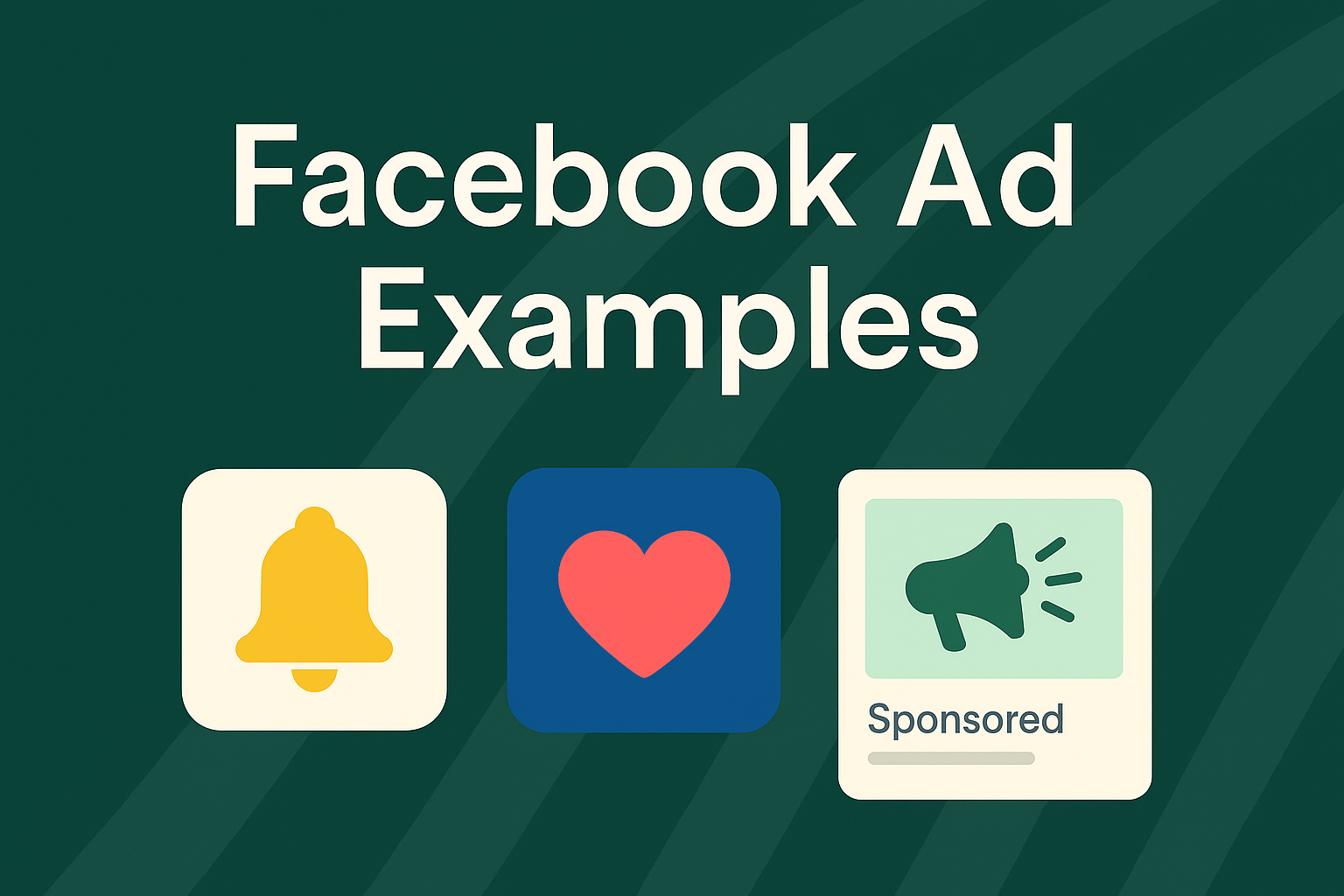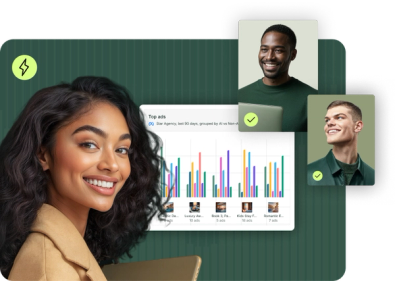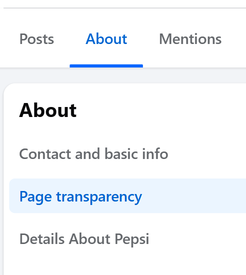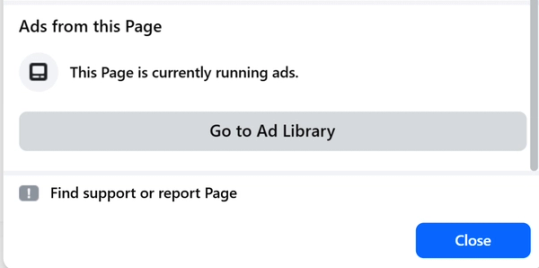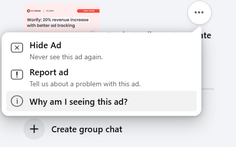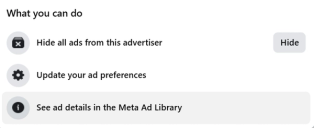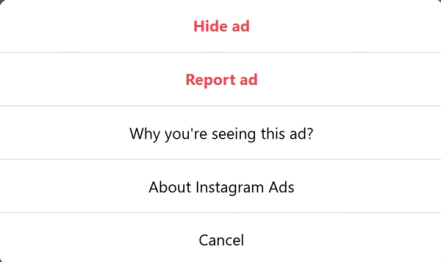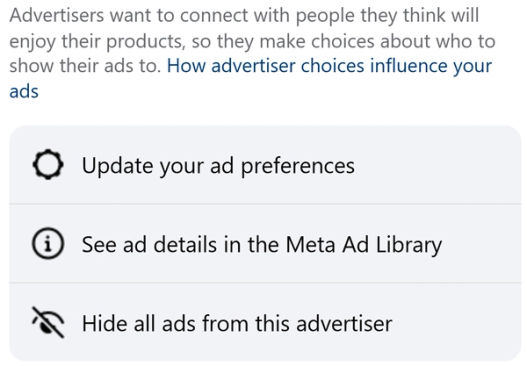6 ways to use the Meta Ads Library in a successful ad strategy
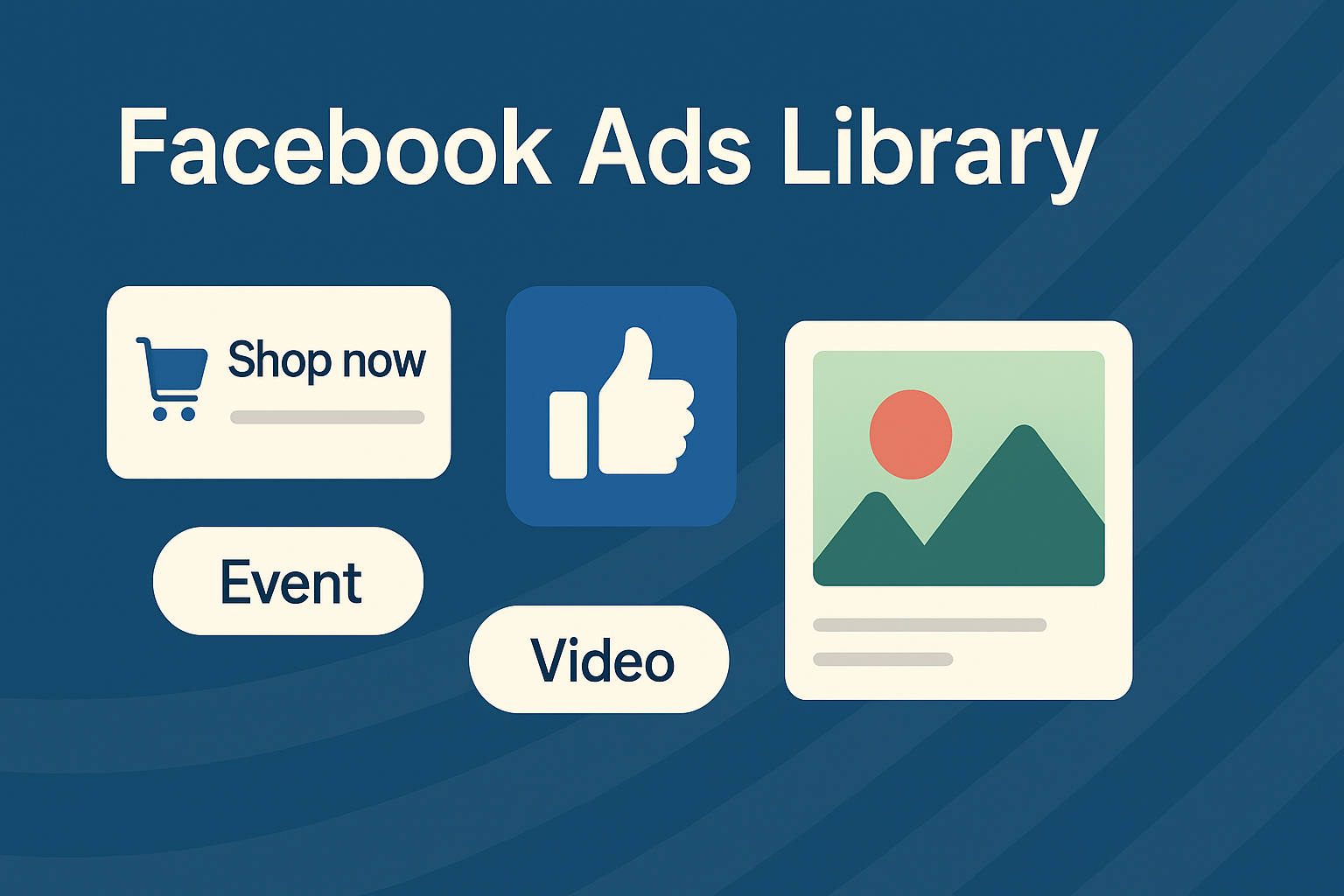
The Meta Ads Library gives total access to thousands of ads running now across Facebook, Instagram, Messenger and the Audience Network. It has evolved from a political transparency tool into an essential competitive intelligence platform for data-driven marketers seeking creative inspiration and strategic advantage. Read here how you can use it to boost your ad strategy to success.
The Meta Ads Library (formerly called the Facebook Ads Library) is a free and public database that displays all active ads running across Meta platforms, including Facebook, Instagram, Messenger and the Audience Network.
With over 10 million advertisers using Facebook Ads and 93% of marketers investing in the platform, the Meta Ads Library is a must-have for any data-driven growth marketer or creative strategist who wants to stay competitive.
Originally launched to bring transparency to political advertising, it has since become an invaluable tool for marketers who want to understand how top brands are approaching paid social today.
If you’re only checking the library occasionally to spy on a competitor’s latest campaign, you’re missing its real potential. When combined with the right analytics tools, it becomes a catalyst for smarter strategy and better-performing ads.
This post breaks down how growth marketers, social media managers and creative strategists can use the Meta Ads Library to:
- Observe what’s running and adapt ideas for your brand and campaigns
- Reverse engineer winning ad formats, creative and messaging
- Identify missed opportunities your competition isn’t exploiting
- Feed your creative and testing roadmap
- Go further into a rewarding ad strategy, especially when paired with an advanced creative analytics tool.
Let’s dive in!
How to access the Meta Ads Library?
Accessing the Meta Ads Library is straightforward and requires no special permissions or accounts. Here's how to get started:
Method 1: Direct access (quickest)
- Visit the Meta Ads Library website that's linked here.
- Select your region from the dropdown menu.
- Choose the ad category you want to explore (All ads, housing, political, etc.)
- Begin searching by advertiser name or keyword.
Method 2: Via Facebook
- Navigate to any Facebook Page and tap on their "About" section.
- Select "Page Transparency" in the left sidebar and then "See all."
- Scroll down the newly opened window and click "Go to Ad Library" to see all ads that page is running in the library.
Method 3: Facebook Ads
- Open Facebook and hover over an ad.
- Tap on the three-point button and select "Why am I seeing this ad?"
- Choose "Advertiser choices" and then select "See ad details in the Meta Ads Library" right at the end. Disclaimer: You will land on the library's specific information page of the ad you just tapped.
Method 4: Instagram Ads
Similar to the Facebook Ads method, you'll also have to follow a few steps:
- Open Instagram and press the three white-button icon at the top right corner of a sponsored post, story ad or another ad format.
- Select "Why you're seeing this ad?" and then "Advertiser choices".
- Finally, select again: "See ad details in the Meta Ads Library" right at the end. Disclaimer: You will land on the library's specific information page of the ad you just tapped.
The Meta Ads Library interface is intuitive, but for better research, we recommend using the desktop version, which provides more comprehensive filtering options and easier navigation for professional marketers.
What exactly is inside the Meta Ads Library?
The Meta Ads Library offers a window into your competitors’ live ad campaigns and the broader landscape, which helps you to gather ideas and intel without spending a dime.
It showcases the ad creative and placements of every advertiser on Facebook, Instagram, Messenger and the Audience Network only while the ad campaign is running.
Think of it as your real-time window into the paid strategies of every advertiser on Meta. From visuals and copy to placements and formats, it gives you an instant snapshot of what’s running now.
Inside the library, you’ll find:
- The whole creative from a given ad or a set group of ads: Images, videos, carousels, copy, headline, CTA (and the link or form that the CTA sends you to). This means you can find ads from specific competitors or discover creatives around particular themes or products.
- Ad variations per asset: See all versions (A/B tests included) of the copy, images, videos and CTAs from a running group of ads. You'll also see if an ad was halted by Meta, and the reason behind it.
- Multiple-use filters: You can search by advertiser (brand/page name) or keywords, and filter results by country, platform, ad category and more (we’ll tell you how to use it strategically below)
- Active ad status: You’ll also find the start date and how long it has been live. Just below the status, you'll also see the ad's unique ID within the library.
- Platforms used: All the places where the ad is running. e.g., Facebook, Instagram, Messenger or the Audience Network.
- Information about the advertiser: Promoting page, page history and primary countries where the account is managed.
- Branded content: You can also search for ads on Facebook and Instagram that involve a paid partnership (doesn’t include influencer marketing efforts, only brands)
Each ad will look like this on the Facebook ad library dashboard:
If an ad has different variations, they will appear together as a group of ads. You can access each individual ad by tapping "See summary details".
European Union transparency and political ads details
For political ads and campaigns delivered in the European Union (EU), you’ll also see, after clicking the "See ad details" section:
- Audience information: Demographic breakdowns by country, region, postal code or city, targeted gender and age. It also includes audience size, reach by geographic location and if the ad was digitally created or altered by the advertiser.
Note that, for all Meta ads regardless of location, you'll also see a brief demographic description when selecting the "Why am I seeing this ad?/Why you're seeing this ad?" option over an ad on both Facebook and Instagram, but it won't be as detailed as in the Meta Ads Library.
- Spending/targeting: See payer/beneficiary data. For political/social issue ads, you'll also see total ad spend based on the payer's currency, last week's specific spend and detailed contact information from the advertiser.
Financial products and services, housing and employment ads can also be selected as special ad categories when researching in the library. However, these ads will mostly show you the same information as regular commercial ads, but they help you filter your results.
What you won’t find on the Meta Ads Library
- No performance metrics. For example, no CTRs, conversions or ROAS. The Library deliberately skips performance metrics for advertisers privacy.
- No access to historical, inactive ads, except for regulated categories or in the EU (max 1 year).
- No direct download of ad creative (but you can take screenshots or use Chrome extensions to help with that).
You can search by brand, keyword or category and filter by country, platform, date and even ad type. You can also research certain political or issue-based ads, even after they're inactive, as they get stored for seven years. This storage is also very useful for journalists and researchers.
Again, even if you won’t see actual ad performance (impressions, clicks, conversions), it’ll give you a strong sense of the strategy of a main competitor during a given time period.
6 key ways you can use the Meta Ads Library for ad success
1. Do in-depth, creative competitive research
Use the Library to see the exact ad creatives, placements and offers your competitors are currently investing in.
You can see what products they’re promoting, the messaging they’re using, the visuals they rely on, and even how many variations they’re testing. It’s essentially a free creative audit of your competition, and a valuable opportunity to learn what’s working for them.
Pro tip: If an ad has been running for weeks or even months, chances are it’s performing well. Bookmark these ones for a deeper analysis—they’re often great benchmarks for what resonates in your space.
How to start
Start by listing out the competitors or top brands in your industry that you want to study. Include direct competitors (who offer similar products/services to the same audience) as well as aspirational brands or category leaders.
- Do a detailed brand search. Go to the Meta Ad Library tool and select a region and category (typically “All ads” unless you specifically need political, social issue, housing, financial and employment ones). Then, use the search bar to find your competitor’s Facebook page or a relevant keyword. You can search by the brand’s name to see all ads they’re running.
- Once there, you’ll find a dashboard full of the latest running ads based on your given query. Look up direct competitors, up-and-coming challengers or even brands outside your sector that can give you inspiration. This gives you a wide lens on creative strategy across the landscape.
- Click on “See ad details” to learn more about the ad. From the advertiser to specific transparency details according to the geographical location of the ad and its topic.
- Landing page review. Don’t stop with the ad creative. Click through to see how each brand connects its creative to the post-click experience. Are they keeping the message consistent? Is the offer easy to redeem? Is it a top-of-funnel awareness ad (brand story, broad benefit)? Mid-funnel consideration (case study, detailed feature list)? Bottom-funnel conversion (direct offer, discount code)?
- Creative variation hunting. When flagged by Meta, some ads will have some dynamic variations. For these assets, scan for subtle changes in copy, visuals or format. Are they A/B testing different price points, CTAs or hooks? Identifying these patterns gives you insight into their testing strategy.
- Search for branded content. If you’re doing competitive research for a specific set of brands, you can also see their paid partnerships with influencers around your industry.
Go to the top right corner of the library and tap on “Branded content”. There, you can find recent multiple creators' partnerships with a given brand across Facebook or Instagram, and you’ll be taken to their page if you want to watch the live content.
Pro tip: Use the Facebook Ad Library API to perform even more customized searches, with developer support. For a simpler, full-on ad report based on a given criteria (i.e., query + country + date selected), you can use the Facebook Ad Library Report.
Want to move faster from competitor insight to winning creative? Tools like Superads let you dig deeper into what’s working and why, helping you translate inspiration into impact.
2. Get creative and messaging inspirations
Based on your search terms, you can quickly surface creative trends and strategic signals that inform your own work. Facebook has some general ad creative recommendations, but knowing the ad creative trends that are working now within the library will help you shape your ad strategy based on state-of-the-art insights.
What to look for
- Format trends. Are video ads dominating the feed, or is there a comeback of static images and carousels? Is there a specific ad size or spec that you should be using more? Spot what’s catching attention and consider how format choice aligns with your goals.
- Messaging angles. Pay attention to recurring themes like user-generated content, founder stories, bold offers, humor, emotional pull, or branded storytelling. These angles reveal what’s resonating across your category.
- Fresh hooks and value proposition. Look at how brands introduce their value props. Are they leading with urgency, anchoring in social proof, or focusing on a specific product benefit?
- Branded partnerships. Check for “Paid partnership” labels to see how brands are leveraging influencers or collaborators. Note which features or offers they highlight and how they position the partnership.
You could start with a simple industry keyword, like “classic pianos” or “CMS software.” As you've seen above, this will surface a wide range of active ads, giving you a live snapshot of design styles, tone of voice and when they were launched.
Maybe you’ll notice a surge in product-led videos or a trend in value-based messaging, clues you can adapt or challenge in your own paid social campaigns.
3. For benchmarking and market gap analysis
Seeing another brand’s ads can help validate strategies or restructure them. If a competitor is running a similar campaign or angle that you’ve considered, it suggests that the idea has merit.
Whether you're validating a campaign idea or looking for a unique edge, competitive visibility is key. On the flip side, if you're doing something no one else is, it could be a bold differentiator or a blind spot worth re-evaluating.
To benchmark Facebook ads:
- Spot missing plays. Are none of your competitors using Messenger Ads, Reels or promotional bundles? That might be a gap you can fill, or a warning sign about platform performance. Context is everything.
- Track repurposed creative. Keep an eye on recurring themes, A/B tests, seasonal templates or high-performing evergreen ads that brands return to for sales, holidays or launches. These are often proven formats you can reframe in your own voice.
- Assess industry norms and guardrails in regulated spaces like health, finance or politics. Review which ad categories dominate and how compliance messaging is presented to stay aligned with industry expectations while still standing out.
Gap analysis starts with curiosity. As you review ads, ask yourself:
- Are there pain points or benefits that none of your competitors are addressing?
- Are all brands leaning on the same messaging angle—like “natural ingredients” in haircare—when another unique benefit, like “money-back guarantee” or “dermatologist recommended,” could set you apart?
- Are certain audience segments being ignored? You won’t see targeting directly, but you can infer intent from visuals, tone, and copy.
For instance, if none of your competitors are addressing a particular pain point or audience segment in their ads, that might be an opportunity for you to fill the void and then use a reporting tool to see how it performs.
Or you might find their ads all look formulaic, which indicates that there’s a chance to differentiate with a fresh creative approach. e.g., if none of your competitors are using testimonial video ads but you know your audience engages with video, that’s another chance to stand out.
However, remember that a gap doesn’t necessarily mean what no one is doing, but what no one is doing successfully.
If you can access the live post on Facebook, the sentiment in the comments and reactions can tell you if an ad is actually achieving its planned goals.
Although this might depend on the ad's intent, these subtle cues can reveal overlooked demographics, niche communities or unmet needs that your brand is positioned to speak to.
Competitive Facebook Ads benchmarking isn’t about copying; it’s about clarity. The goal is to see where others are focused so you can intentionally go in a different direction. That’s how you build creative that breaks through the noise.
Looking for metrics to back up your insights and test your hypothesis? Check out Superads’ free Facebook Ads Benchmarks tool, powered by >$2B in anonymized ad data, to see what top-performing ads you found on the library are costing today in your targeted niche and country. Try it now.
4. For creative testing and iteration
The Meta Ads Library can also be used as a testing compass. By studying patterns in creative formats and ad longevity, you can identify what likely resonates with your audience, then build on those insights with your own spin.
The goal here isn’t to copy, but to learn, adapt and evolve. The Library shows what’s working for others. Your job is to test if it works for you.
Key tactics for smarter creative testing
- Monthly check-in loop. Use the library consistently, especially leading into seasonal pushes or major promotions. A regular cadence helps you stay in sync with how competitors iterate and evolve their creative strategy.
- Build a swipe file. Save standout examples to a shared team deck and store them by theme, product or tactic. Use this for creative syncs and planning sessions.
- Analyze ad duration. Frequent refreshes on an ad may signal aggressive testing or a struggle to find a winner.
- Creative trends stick over time. The more often you monitor, the better you’ll understand which styles and messages consistently land in your niche.
From insight to execution
After a thorough dive, you should walk away with a focused list of next steps:
- Creative formats worth experimenting with
- Messaging angles that seem to consistently perform
- Pitfalls to avoid based on what’s not sticking
- Fresh concepts sparked by competitive campaigns
Now put that list to work. Just make sure every idea is tailored to your voice and audience, and always A/B test before scaling. Over time, this process helps you build stronger creative instincts and a repeatable workflow for campaign refinement.
Consolidate these observations to deduce what likely resonates with the audience. Crucially, look at the dates ads started and how long they’ve been running.
The TL;DR? The goal is not to copy, it’s to learn what works and make it your own. Test everything. Facebook can show you what’s working for others, but only experimentation will tell you if it works for you.
5. Research for specific ads using filters
The filter tools are powerful and the main feature for ad research in the library. Leverage them to narrow down to ads most relevant for your hypothesis and solve key questions (e.g., see only video ads in the US in the past 30 days).
Spend time performing multiple searches for each competitor and keyword on your list, and save the URLs or results for each ad you think you may need to come back in the future. Here's a small playbook on how to research specific ads on the Facebook Ads Library:
- Head to the Meta Ads Library. Choose your region and set the ad category to “All ads”.
- Search by brand name or keyword. Enter a competitor’s name to see all active ads from their Facebook page. Want broader inspiration? Use industry keywords like “meal delivery” or “B2B software” to surface ads across your niche, including lesser-known players with fresh creative strategies.
- Filter ads for targeted insights. Narrow down your view by:
- Platform: Want only Instagram ads? Filter accordingly.
- Country: Focus on your key markets.
- Ad format or timeframe: Zoom in on video ads from the past 30 days, last week or quarter (depending on the campaign's period) to spot recent trends.
- Media type: Select between images, videos, memes or a combination of the three.
- Language: Ads with more than two languages within the copy will not appear when this filter is applied.
- Bookmark and track searches. For every keyword or competitor you search, copy the URL or bookmark the results. The Meta Ads Library lets you save links to any search, making it easy to revisit or share with your team later.
- Repeat and expand. Run multiple searches for each competitor, keyword or format. The more thorough you are, the clearer the creative patterns become. This is your raw material for analysis, ideation, and strategic planning.
6. Monitor and update regularly
Using the Meta Ads Library shouldn’t be a one-and-done exercise per campaign. Make it a habit to revisit the library periodically (say, monthly) to see what’s changed. This good practice will keep you on the pulse of what your competitors are launching, testing or phasing out.
Why does monitoring consistently matter here? Here are some key reasons why:
- Spot emerging players. New brands enter the market all the time. Frequent checks help you catch them early and see how they’re positioning themselves.
- Monitor competitors during key dates. Reviewing competitors’ ad campaigns during major sales events or product launches is essential to know which creative performed best, since this is when most brands often unveil their boldest or most refined creative.
- Track strategic shifts. Existing competitors may roll out fresh campaigns tied to product launches, seasonal pushes or new offers
- Save time with bookmarked searches. You can save specific searches within the Meta Ads Library for quick access next time. This turns repeat research into a fast, frictionless process.
Click the three dots on the right side of the ad and select the "Copy ad link" option. You'll get the specific library URL for the ad, and permanent access anytime to the ad while the campaign is live or whether the ad doesn't stop. We recommend taking a screenshot, too, in case you want a permanent reference of the ad.
Create a feedback loop
Ongoing monitoring becomes more powerful when paired with your own testing. Here’s how:
Competitor does X → You observe and test a version of X → You measure results → You keep or discard based on performance.
This cycle not only helps you stay agile but also steadily improves your ad strategy. It turns reactive research into proactive optimization.
Using the Meta Ads Library also helps you understand broader advertising norms and Meta’s evolving policies. You’ll naturally learn:
- What types of ads tend to get flagged, removed or labeled
- How different industries communicate within policy limits
- What “Meta-preferred” creative execution looks like in high-scrutiny categories
Beyond marketing strategy, using the Ads Library keeps you informed about the broader advertising landscape and policy compliance. You can ensure your ads stand out in a good way (and don’t mimic a competitor too closely) and avoid any ad restrictions.
And by observing many ads, you’ll intuitively learn what appears to be compliant with Meta’s policies and what isn’t (for example, seeing the kind of ads that get taken down or getting a not delivering status).
This awareness helps in creating smarter, policy-compliant ads for your own brand, which improves your Facebook Ads Opportunity Scores (but we also built our own opportunity score just for you!).
How to add the Meta Ads Library to your ad strategy
Here’s a practical, high-yield workflow:
Step 1: Make your “watch list”
- Identify 5–10 direct competitors + several aspirational brands.
- Save each brand’s Meta Ads Library page on your address bar.
- Set this up as your ongoing monitoring list.
Step 2: Pin down your filters
- Apply specific filters to refine your analysis based on your target audiences:
- Country & language
- Platform: Facebook, Instagram, Messenger, Audience Network
- Date range: Spot seasonal patterns or new launches
- Media type: Video, static, stories, carousels, reels
Step 3: Analyze the “winners”
- Longevity: Ads running for weeks/months = high performers.
- Variation: Identify what’s being A/B tested (copy, CTA, visuals).
- Offer type: Lead magnets, discounts, UGC, exclusives, etc.
- Extract what you think likely drives performance.
Step 4: Spot gaps and weaknesses
- Look for:
- Unused placements (e.g., no Reels or Messenger use?)
- Ignored formats or media types.
- Missing tones, angles or demographics your brand could own.
- Use this to identify creative whitespace and opportunity.
Step 5: document & share insights
- Build internal slides or swipe files of winning examples.
- List observed “Don’ts”:
- Repetitive angles
- Underperforming ad types
- Poor design or copy mistakes
- Keep a team-shared resource for creative inspiration & guidance.
Step 6: Do a systematic ad monitoring
- Set a recurring calendar slot (monthly or quarterly).
- Refresh your watch list and review new ads.
- Track seasonal pivots, copycat moves, and creative fatigue.
- Keep your ad strategy aligned with market shifts.
What the Meta Ads Library will never do
Although the Meta Ads Library gives you qualitative insight from multiple ads, it won’t fill your analytics gap. That’s where creative analytics platforms like Superads come in.
While the library shows live ads, how competitors iterate and what’s “trending now,” Superads reveals what actually performs for your own Meta, TikTok, LinkedIn and YouTube (beta) campaigns.
What Superads brings to the table
- Unified reporting: Syncs your paid account data across platforms into one dashboard.
- AI tagging: Automatic, granular creative tagging. Like knowing which headline, CTA or visual actually moves the needle.
- Performance breakdown: Answer deep-dive questions fast (“Are our UGC videos outperforming founder-led videos this month?”) with Copilot.
- Shareable reports: Visual, customizable reports and boards (ditch the spreadsheets).
- AI copilot: Ask questions, get instant insights and rapidly iterate your creative strategy.
You can get insights from the Meta Ads Library to spark ideas and validate strategies. Then run, measure and optimize using Superads analytics to see what’s truly driving ad performance. No more manual reporting or guesswork.
Superads provides so much value since effective creative is the critical success factor in social media marketing. It’s the secret weapon for social ad performance optimization.

Top-tier Meta Ads analytics tool for marketers who want to win
The Facebook Ads Library is a competitive ad intelligence goldmine for any growth marketer or social media manager. But it’s just the beginning of your successful ad strategy.
But don’t stop at observation. The combination of qualitative insight and quantitative measurement is your unfair advantage. This is the flywheel of modern paid social success.
Want to know which creative, format and channel is actually crushing it? Try Superads AI-powered reporting for free and cut manual work from your paid social workflow.
You may also like these
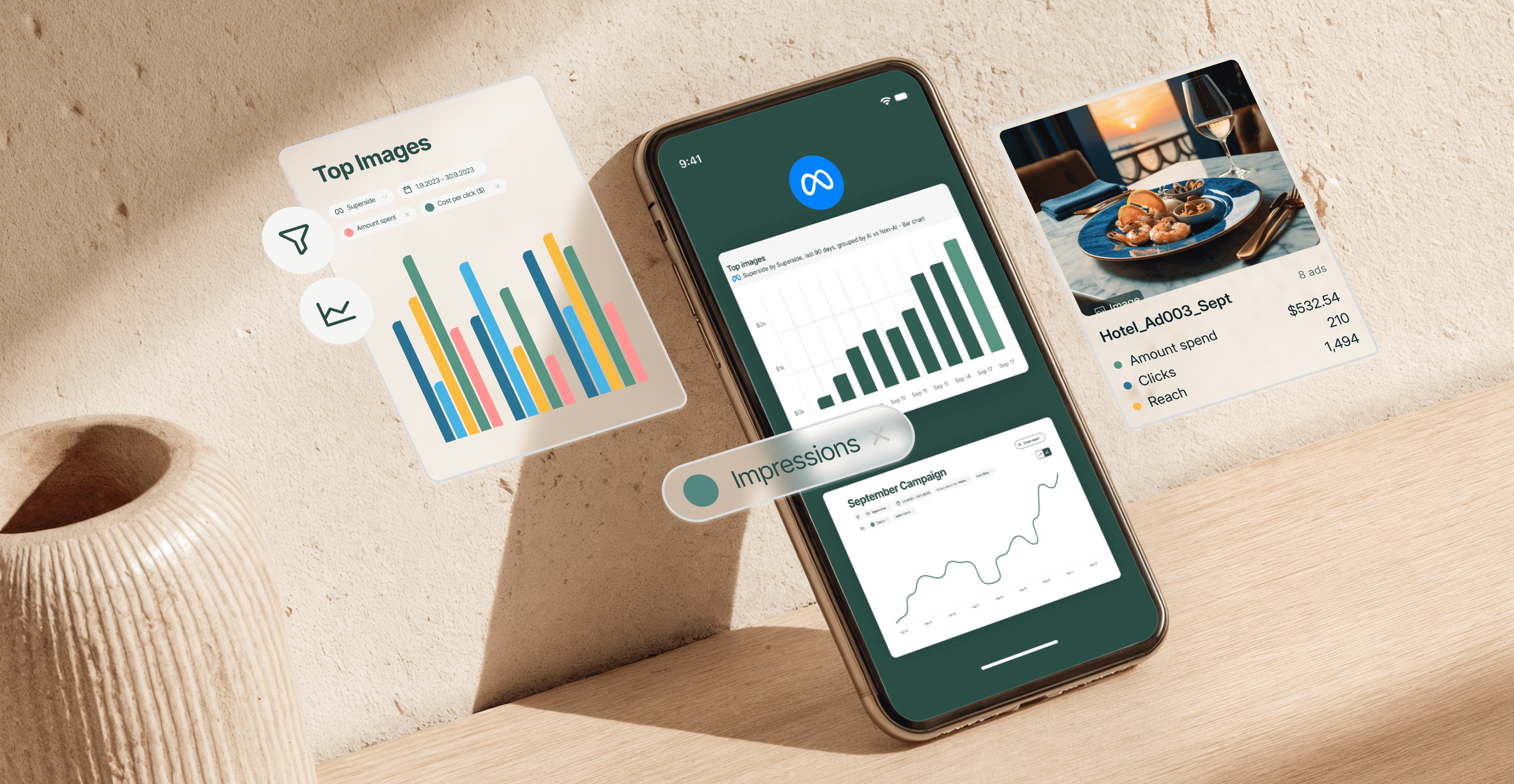
Facebook campaign budget optimization strategy guide for better ads in 2025
Running Facebook ads without a solid budget optimization strategy is like throwing money into a black hole: you might get lucky, but you're probably wasting cash.With over 3 billion monthly active users scrolling through Facebook daily, the platform offers incredible reach.But here's the thing: reach without smart budget allocation equals burned budget.Facebook Campaign Budget Optimization (CBO) changes the game entirely. Instead of manually babysitting your ad spend across multiple ad sets, Facebook's machine learning algorithm distributes your budget where it'll perform best, in real-time.This Superads guide breaks down everything you need to master Facebook budget optimization. You'll learn how to set up CBO campaigns that actually work, avoid the budget traps that kill performance, and scale your winning ads without breaking the bank.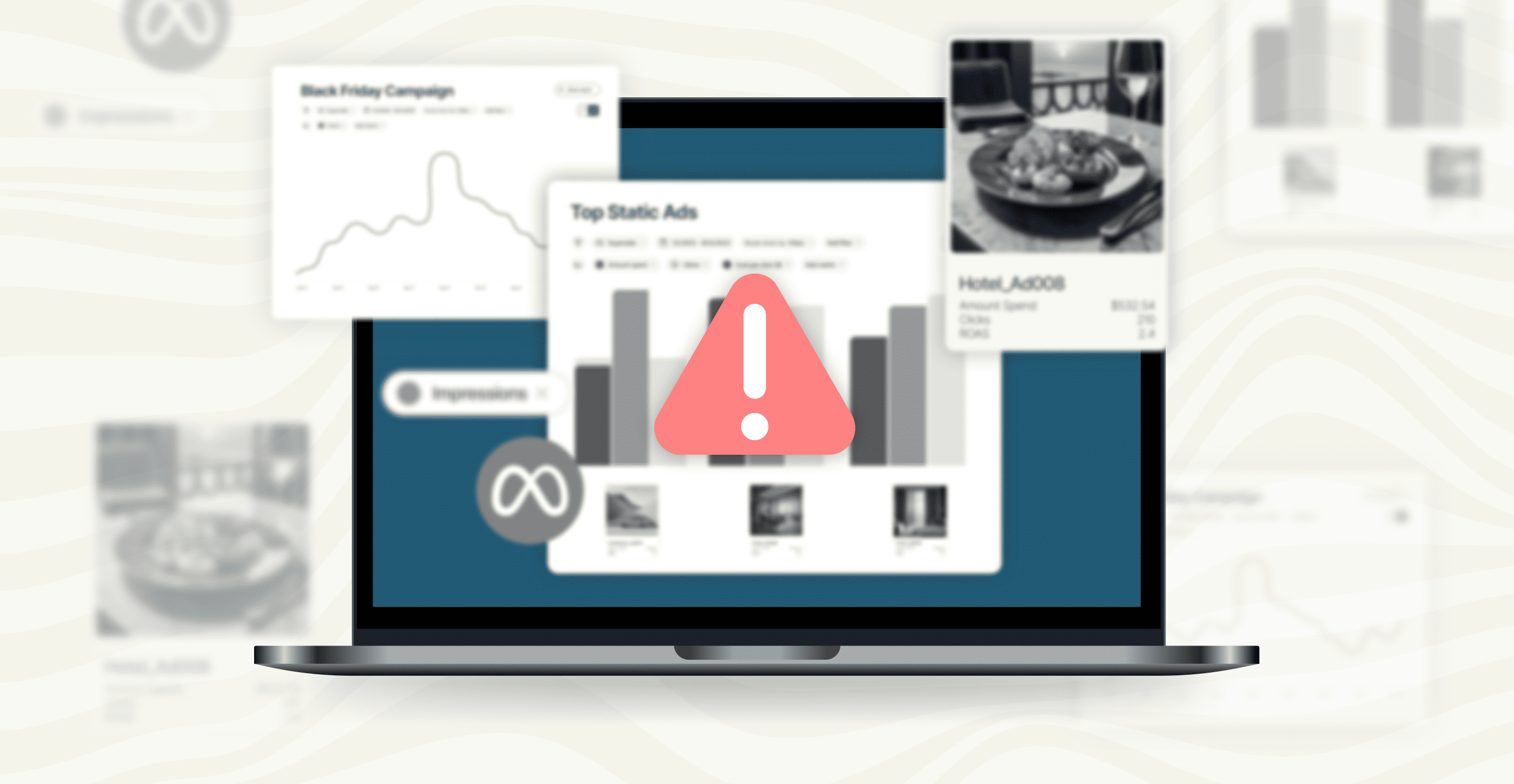
Facebook Ads account restricted? Here's how to fix it (2025)
Getting hit with a "Facebook ad account restricted" notification feels like a punch to the gut, especially when campaigns are driving real results. One minute you're scaling profitable ads, the next you're locked out of advertising entirely.If you're dealing with a Facebook ads restricted situation right now, don't panic. Account restrictions are more common than you think, and many restrictions can be resolved through appeals or reviews, depending on the severity of the violation.This article walks you through why Meta ads account restricted issues happen and provides a step-by-step roadmap to get your campaigns back online.Whether your restriction stems from policy violations, suspicious activity or Meta's automated systems making a mistake, we'll show you how to navigate the appeals process and prevent future restrictions from derailing your advertising efforts.Understanding Facebook Ads account restrictions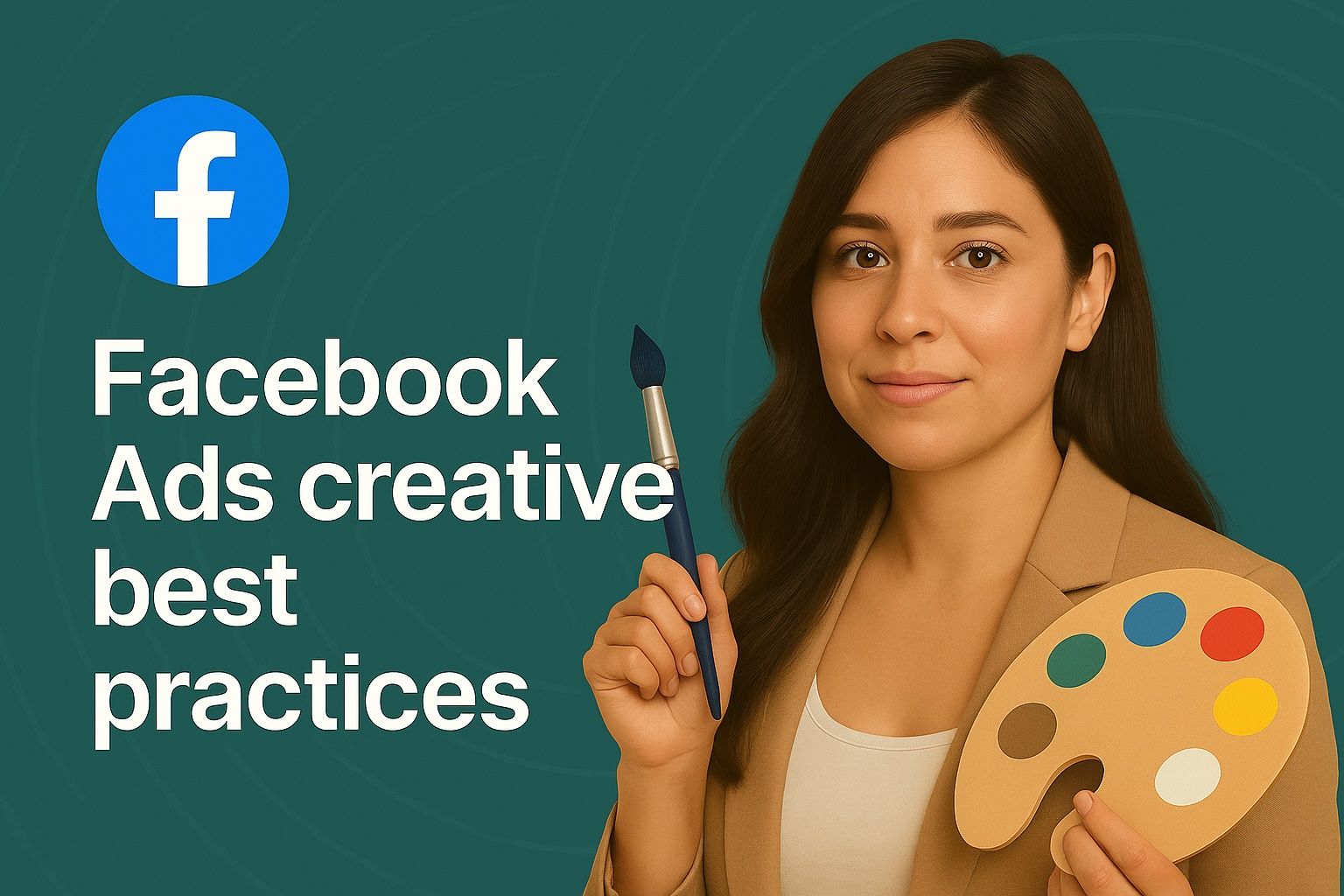
6 Facebook ads creative best practices for better campaigns
Attention spans are now measured in blinks, and your ad creative has milliseconds to make an impression. Plus, you have a picky platform to please.The Facebook algorithm loves engaging visuals, video ads and content that truly clicks with your target audience. And your creative is the real performance driver here.If your ads are ineffective, a tool like Superads can help you spot what’s missing to make quick adjustments. But before we delve into the benefits, let’s unpack how to design Facebook ads that actually deliver. 😉The anatomy of high-performing Facebook ad creativeIt makes sense to pay close attention to what the world’s top-performing Facebook ads have in common.